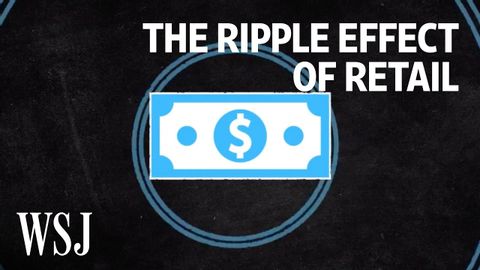小売売上高の経済波及効果、解説WSJ (The Economic Ripple Effect of Retail Sales, Explained WSJ)
洪子雯 が 2021 年 01 月 14 日 に投稿  この条件に一致する単語はありません
この条件に一致する単語はありません- v.t./i.突き刺す : 刺し込む;貼る : くっつける;とどまる;突き出す;我慢する
- n. (c.)棒
US /ɪˈsenʃəli/
・
UK /ɪˈsenʃəli/
US /ˈstrʌɡəl/
・
UK /'strʌɡl/
- v.t./i.奮闘する;もみ合う
- n. (c./u.)奮闘;苦闘
US /pænˈdɛmɪk/
・
UK /pæn'demɪk/
エネルギーを使用
すべての単語を解除
発音・解説・フィルター機能を解除

